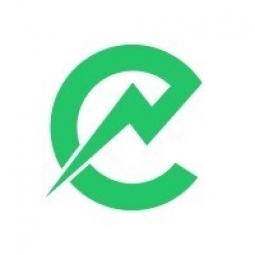Technology Category
- Analytics & Modeling - Robotic Process Automation (RPA)
- Platform as a Service (PaaS) - Application Development Platforms
Applicable Industries
- Cement
- Finance & Insurance
Use Cases
- Leasing Finance Automation
- Material Handling Automation
Services
- Training
About The Customer
Intellimorph is a London-based company established in 2018. Despite its relatively young age, the company's leadership has over twenty years of experience in various sectors, including local government, banking, finance, legal, and non-profit. Intellimorph operates with a 'people first' mantra, striving to build long-term partnerships with small and medium-sized organizations navigating the complexities of digital transformation. The company employs ten developers specializing in process automation and web development, and it aims to help its clients understand and reap the benefits of process changes.
The Challenge
The rise of remote work has necessitated a shift in the way businesses operate, with a greater emphasis on digital communication and information transmission. This has posed a significant challenge for small businesses and non-profit organizations, which often lack the resources to adapt to these changes. Intellimorph, a company specializing in process automation and web development, identified a gap in the services provided by traditional Robotic Process Automation (RPA) firms. These firms were not adequately catering to the needs of the Small and Medium-sized Business (SMB) market. Furthermore, Intellimorph noted that the cultural shift towards automation was met with resistance, with many people uncomfortable with the changes.
The Solution
Intellimorph decided to build a platform to capture process information and monitor results, aiming to provide an end-to-end process transformation. The company targeted the SMB market, which had traditionally been overlooked by automation companies. To make automation more accessible to SMBs, Intellimorph partnered with ElectroNeek, an RPA platform known for its user-friendly interface and no-code functionality. Intellimorph's approach involves working closely with the customer to understand their business and processes, identifying areas that could benefit from automation. They then communicate these benefits to the client, monitor the success rate of the digital worker, and report results regularly.
Operational Impact
Quantitative Benefit

Case Study missing?
Start adding your own!
Register with your work email and create a new case study profile for your business.
Related Case Studies.

Case Study
System 800xA at Indian Cement Plants
Chettinad Cement recognized that further efficiencies could be achieved in its cement manufacturing process. It looked to investing in comprehensive operational and control technologies to manage and derive productivity and energy efficiency gains from the assets on Line 2, their second plant in India.

Case Study
Real-time In-vehicle Monitoring
The telematic solution provides this vital premium-adjusting information. The solution also helps detect and deter vehicle or trailer theft – as soon as a theft occurs, monitoring personnel can alert the appropriate authorities, providing an exact location.“With more and more insurance companies and major fleet operators interested in monitoring driver behaviour on the grounds of road safety, efficient logistics and costs, the market for this type of device and associated e-business services is growing rapidly within Italy and the rest of Europe,” says Franco.“The insurance companies are especially interested in the pay-per-use and pay-as-you-drive applications while other organisations employ the technology for road user charging.”“One million vehicles in Italy currently carry such devices and forecasts indicate that the European market will increase tenfold by 2014.However, for our technology to work effectively, we needed a highly reliable wireless data network to carry the information between the vehicles and monitoring stations.”

Case Study
Safety First with Folksam
The competitiveness of the car insurance market is driving UBI growth as a means for insurance companies to differentiate their customer propositions as well as improving operational efficiency. An insurance model - usage-based insurance ("UBI") - offers possibilities for insurers to do more efficient market segmentation and accurate risk assessment and pricing. Insurers require an IoT solution for the purpose of data collection and performance analysis

Case Study
Smooth Transition to Energy Savings
The building was equipped with four end-of-life Trane water cooled chillers, located in the basement. Johnson Controls installed four York water cooled centrifugal chillers with unit mounted variable speed drives and a total installed cooling capacity of 6,8 MW. Each chiller has a capacity of 1,6 MW (variable to 1.9MW depending upon condenser water temperatures). Johnson Controls needed to design the equipment in such way that it would fit the dimensional constraints of the existing plant area and plant access route but also the specific performance requirements of the client. Morgan Stanley required the chiller plant to match the building load profile, turn down to match the low load requirement when needed and provide an improvement in the Energy Efficiency Ratio across the entire operating range. Other requirements were a reduction in the chiller noise level to improve the working environment in the plant room and a wide operating envelope coupled with intelligent controls to allow possible variation in both flow rate and temperature. The latter was needed to leverage increased capacity from a reduced number of machines during the different installation phases and allow future enhancement to a variable primary flow system.

Case Study
Automated Pallet Labeling Solution for SPR Packaging
SPR Packaging, an American supplier of packaging solutions, was in search of an automated pallet labeling solution that could meet their immediate and future needs. They aimed to equip their lines with automatic printer applicators, but also required a solution that could interface with their accounting software. The challenge was to find a system that could read a 2D code on pallets at the stretch wrapper, track the pallet, and flag any pallets with unread barcodes for inspection. The pallets could be single or double stacked, and the system needed to be able to differentiate between the two. SPR Packaging sought a system integrator with extensive experience in advanced printing and tracking solutions to provide a complete traceability system.

Case Study
Transforming insurance pricing while improving driver safety
The Internet of Things (IoT) is revolutionizing the car insurance industry on a scale not seen since the introduction of the car itself. For decades, premiums have been calculated using proxy-based risk assessment models and historical data. Today, a growing number of innovative companies such as Quebec-based Industrielle Alliance are moving to usage-based insurance (UBI) models, driven by the advancement of telematics technologies and smart tracking devices.







